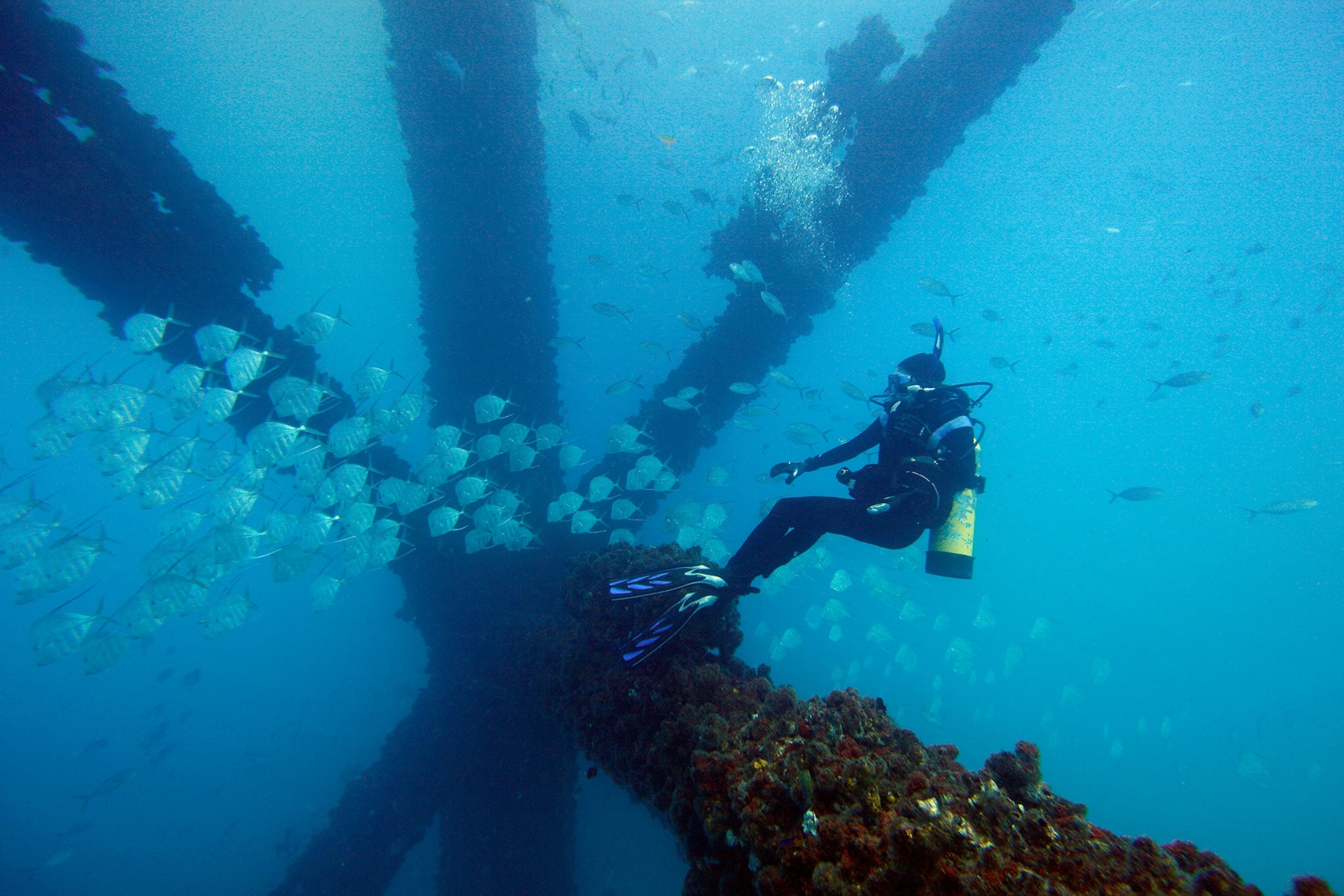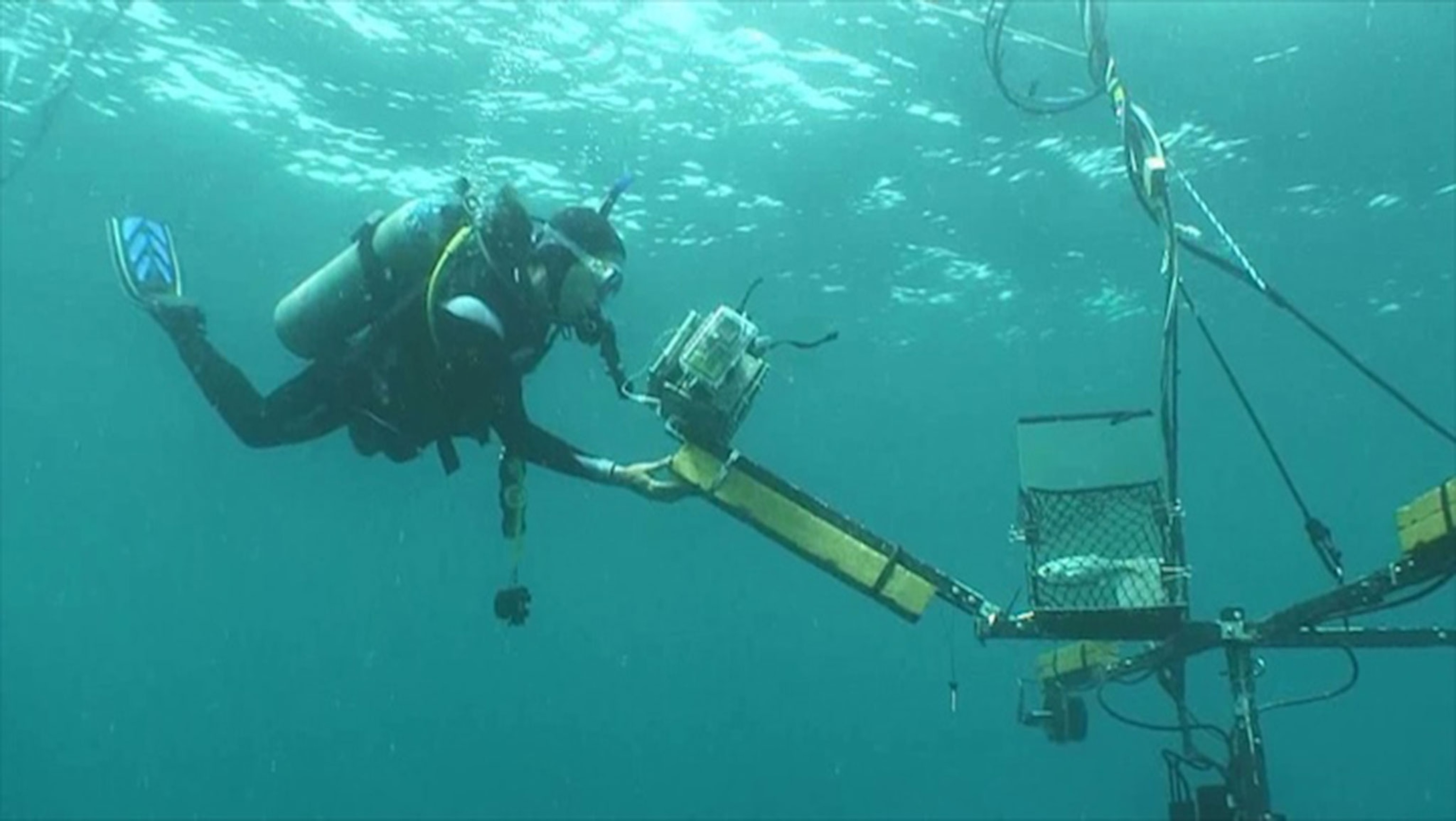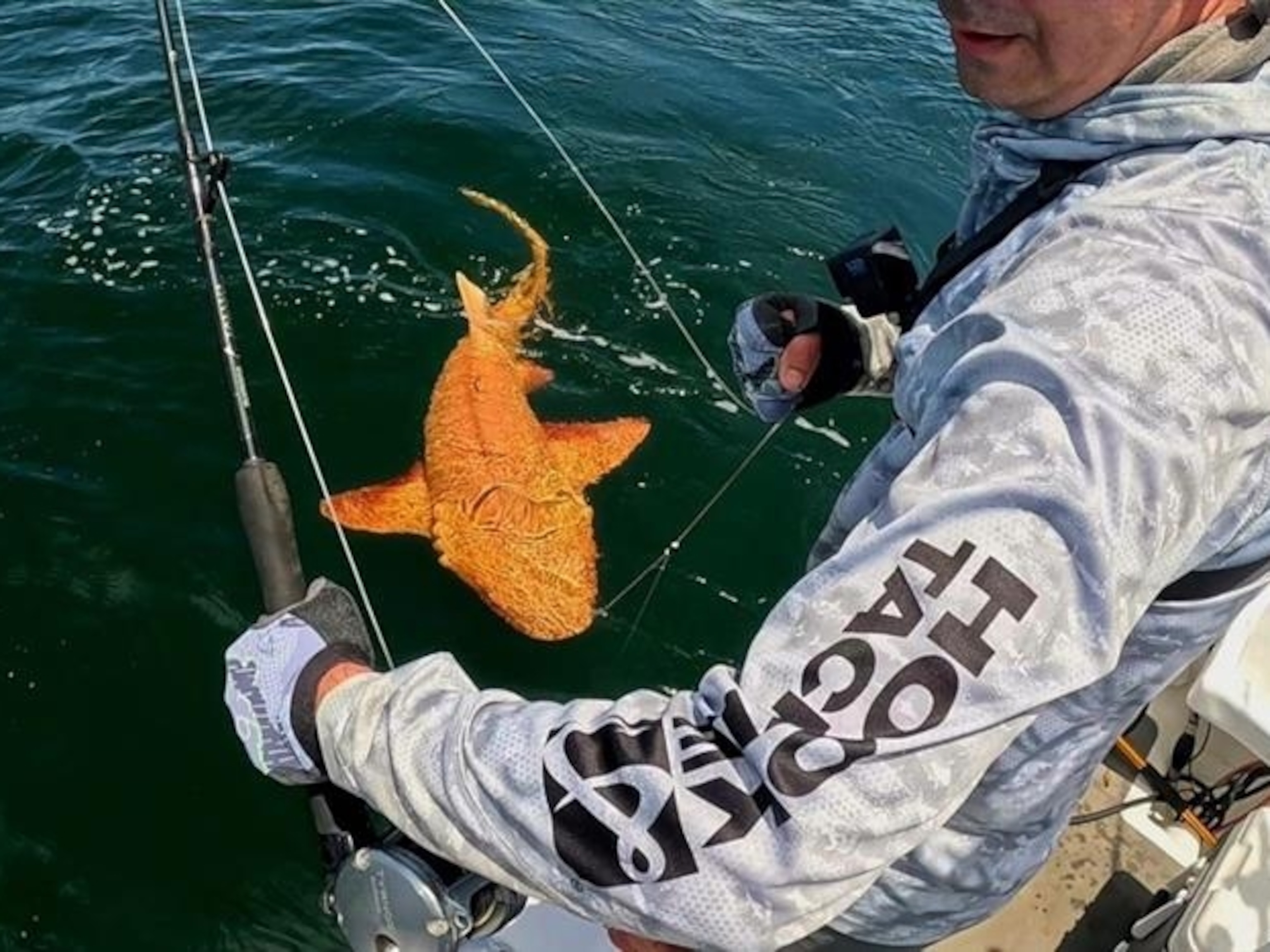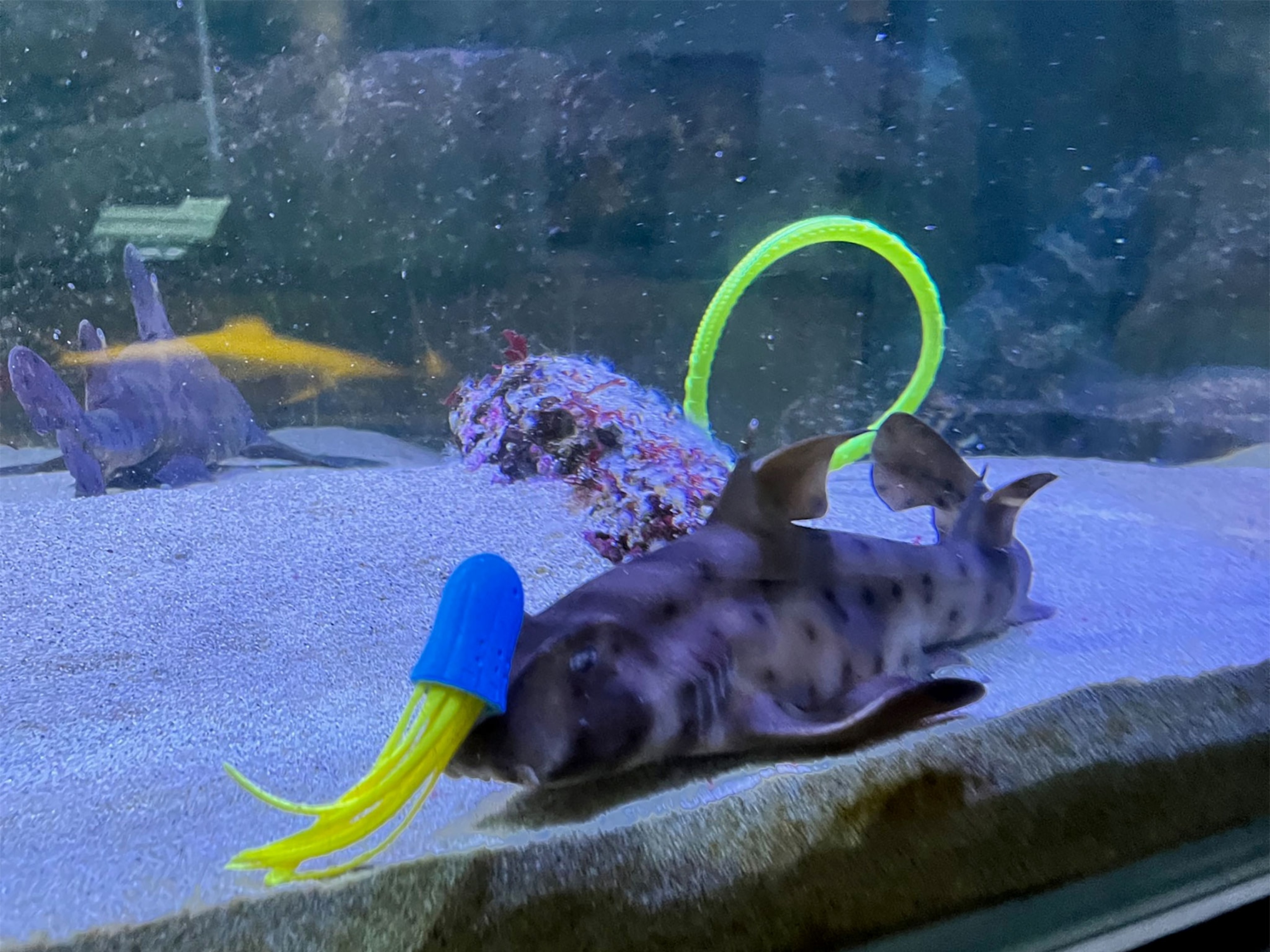
How Fish Make Themselves Invisible—Mystery Solved
Some fish have evolved a strategy to hide in nothing but water and sunlight, a new study says.
It may seem like there's nowhere to hide in the open ocean, but fish have figured out a way to mask themselves in nothing but water and sunlight, a new study says.
Scientists already suspected that silvery fish like the lookdown and the bigeye scad use their skin as camouflage, reflecting light away to be less conspicuous. But it has been difficult to test these ideas where they really matter.
So in a new study, a team built a slowly spinning device with four outstretched arms like a weather vane. One arm steadied a high-tech camera pointed at a fish-constraining net on the opposite side. The researchers dropped the instrument in the ocean off the Florida Keys and Curaçao, where it took over 1,500 photographs and measurements of live fish as the sun moved across the sky.
The research, led by Parish Brady and Molly Cummings at the University of Texas, Austin, showed that open-water fish hid well in polarized light—or light moving in a single plane. Polarized light is common underwater. (See photos: "Masters of Undersea Camouflage.")
The team also found tiny structures in some fish skin, called platelets, bend polarized light to make the fish almost invisible. Researchers had seen these platelets earlier, but whether open ocean fish used them to hide in polarized light was unknown.
Of the fish they studied, two species called the lookdown and the bigeye scad emerged as camouflage champions. They blended in beautifully, showing less contrast than nearshore fish and human-made mirrors held in the nets behind the fish. Previously, researchers had guessed that the fish skin reflected light like a mirror—in fact, it does a much better job.
Not surprisingly, their camouflage also worked best at 45 degree angles from the front or back—angles at which predators strike, according to the study, published November 20 in Science.
Ocean Arms Race?
It makes sense that these open-water fish would need to hide in the ocean’s fluctuating polarized light, but no one had shown that it actually works.

“This research is one of the most comprehensive in the field… [It] paves new ground for understanding how camouflage evolved in the sea,” Susan Williams and Grace Ha at the Bodega Marine Laboratory of the University of California, Davis, said in an email.
Magnus Johnson, a shrimp vision researcher also unrelated to the study, adds by email, “We are pretty sure that [open-water] shrimps can see polarized light—this hints at why that might be. Perhaps there is an arms race between species." (See "Three-Foot "Shrimp" Had More Than 30,000 Lenses Per Eye?")
Invisible Tech
The next step, Brady says, will be to see if the fish increases its camouflage ability by moving the platelets or its body for maximum effect.
The work is supported by the U.S. Navy, which has a few reasons to be interested in how to hide in the open ocean.
Besides the scientific value in understanding fish behavior, other human-relevant applications could include screening marine eyesores around tourist eco-lodges, making exploratory submersibles stealthier, or improving fishing practices by making lures that fish can see, Brady says.
Follow Jenny Morber on Twitter.





